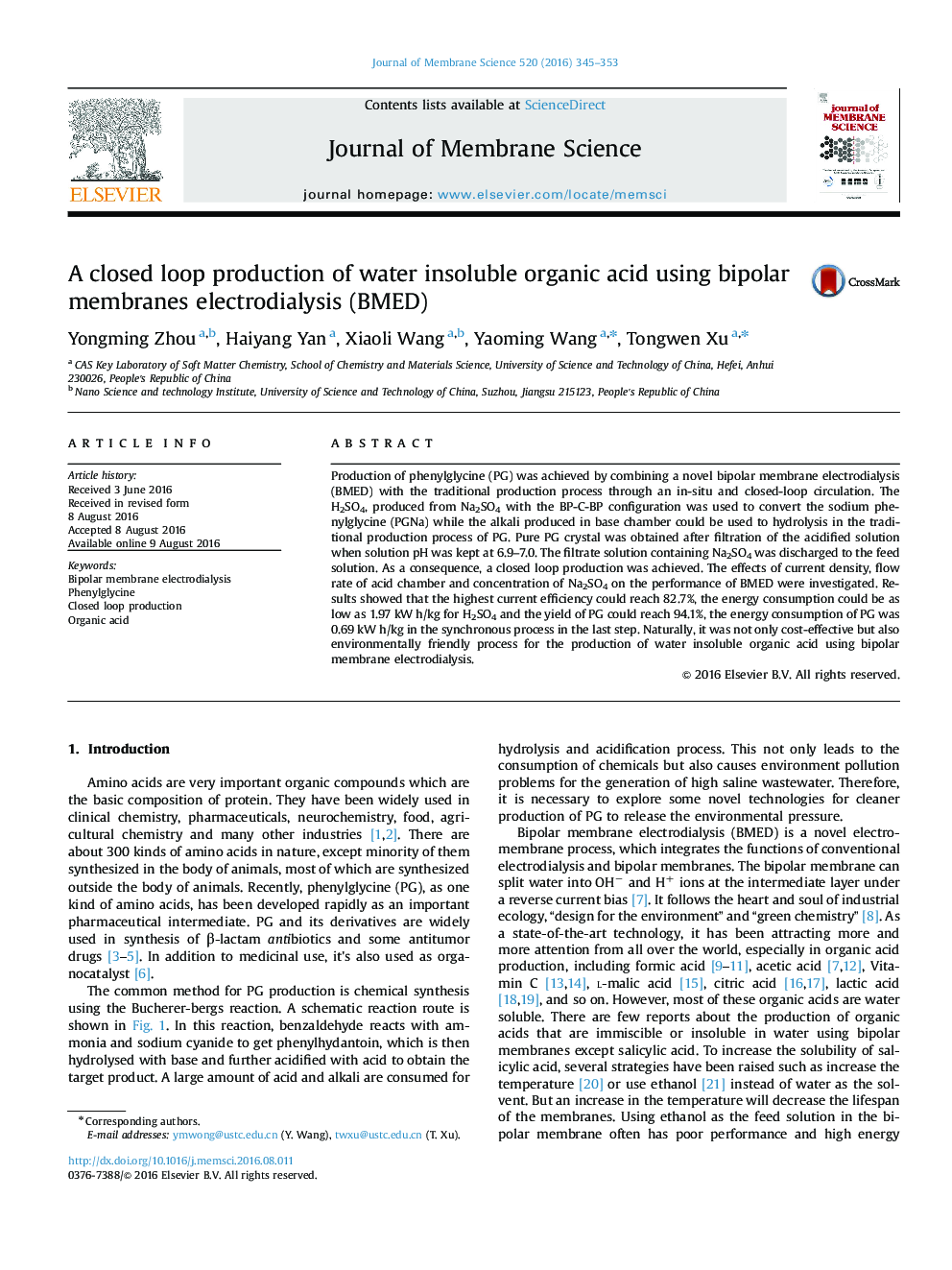| Article ID | Journal | Published Year | Pages | File Type |
|---|---|---|---|---|
| 632173 | Journal of Membrane Science | 2016 | 9 Pages |
•Production of phenylglycine was achieved by a closed loop circulation.•Energy consumption of phenylglycine could be as low as 0.69 kWh/kg.•This novel process could eliminate the discharge of salinity wastewater.
Production of phenylglycine (PG) was achieved by combining a novel bipolar membrane electrodialysis (BMED) with the traditional production process through an in-situ and closed-loop circulation. The H2SO4, produced from Na2SO4 with the BP-C-BP configuration was used to convert the sodium phenylglycine (PGNa) while the alkali produced in base chamber could be used to hydrolysis in the traditional production process of PG. Pure PG crystal was obtained after filtration of the acidified solution when solution pH was kept at 6.9–7.0. The filtrate solution containing Na2SO4 was discharged to the feed solution. As a consequence, a closed loop production was achieved. The effects of current density, flow rate of acid chamber and concentration of Na2SO4 on the performance of BMED were investigated. Results showed that the highest current efficiency could reach 82.7%, the energy consumption could be as low as 1.97 kW h/kg for H2SO4 and the yield of PG could reach 94.1%, the energy consumption of PG was 0.69 kW h/kg in the synchronous process in the last step. Naturally, it was not only cost-effective but also environmentally friendly process for the production of water insoluble organic acid using bipolar membrane electrodialysis.
